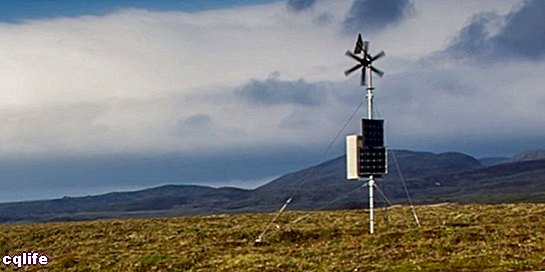- What is meteorology?
- Origin of meteorology
- Object of study of meteorology
- Meteorology and climatology
- Meteorological stations
- Climate elements and factors
We explain what meteorology is, its object of study and its relationship with climatology. In addition, the elements and factors of the climate.

What is meteorology?
Meteorology is the science interdisciplinary study that studies physical of the atmosphere. Its name comes from the Greek voices metéöron ("High in the sky") and logos ("knowledge"). His objective is to understand and predict atmospheric phenomena, that is, to get an idea about the weather.
To do this, meteorologists focus their attention on different atmospheric factors, such as the temperature, the humidity, the Pressure, solar radiation, speed and address of winds, types of clouds, etc., using different instruments and techniques, with which to develop a diagnosis specialized.
Origin of meteorology
The origins of meteorology go back to the very beginning of the human being, who quickly understood that changes on the nature around it they were repeated cyclically, which allowed a certain margin of prediction.
In those times, man associated climatic and meteorological conditions to the will of the gods or to the movement of the stars, since his conception of the world was magical or religious. However, from the greek antiquity there were more rigorous studies of the matter, such as the treatise Meteorological of Aristotle, written around 340 BC.
The emergence of new knowledge and new instruments of measurement on the Scientific revolution the seventeenth century laid the foundations for meteorology as discipline formal, hand in hand with technique and scientific method.
Blaise Pascal, René Descartes, Edmund Halley, Robert Hooke, George Hadley, Luke Howard and Francis Beaufort, among many others, contributed decisively to this.
Object of study of meteorology
Meteorology is dedicated to the study of the different layers of the atmosphere, that is, of the heterogeneous ball of gases that surround the land surface. Of particular interest are the effects of the sun's rays on it, as well as the Energy absorbed by the Earth and the dissipated to outer space, since all this directly affects the evolution of atmospheric weather.
Also of interest are the phenomena that occur in each atmospheric rung, such as the electrical phenomena of the ionosphere, and also the effects that all of the above has on the life of the human being.
Thus, the different branches of meteorology attempt to describe and to some extent predict the behavior of the masses of air of the atmosphere, and its possible natural disturbances, such as meteorites or the solar wind.
Meteorology and climatology
The difference between meteorology and climatology is the same as that between weather Y weather. The weather is the state of the atmosphere at a given moment, what we consult to see if it is convenient or not to carry an umbrella. These are the phenomena studied by meteorology.
The weather is changeable, so if we consider the weather over a specific period, we will instead be taking a look at the climate of our region. The climate, on the other hand, changes more slowly, repeating its cycles, part of a global climate system.
In other words, climatology studies the long-term phenomena of the climate. Meteorology, moreover, is a discipline at the service of the second, since the atmospheric weather records are those that serve, in the long run, to determine the climate of a specific region.
Meteorological stations

Weather stations are the places where meteorologists place their measuring instruments. measurement, such as anemometers, thermometers, barometers, rain gauges, etc., to record the state of the atmosphere at a given time.
These stations usually constitute a network along the territory studied, in order to compare notes and make a common record of time, from which, in addition, make the projections or predictions that are so useful to the population.
Climate elements and factors
The main factors or elements that make up the climate of a region are:
- The temperature. That is, how high are your peaks? heat and how low its cold peaks, at a certain time of the year, since the seasons greatly influence it.
- The insolation. That is, the amount of solar radiation that penetrates the outer layers of the atmosphere and transfers light and heat so much to the mass from gases, as to the earth's surface.
- Atmospheric pressure. Is the force that exerts the mass of gases in the atmosphere on the earth's surface and on itself, being greater in the regions close to the surface and less in those closest to space.
- The precipitation. That is, the amount of Water that falls in the rain, measured in millimeters. The more rain, the more humidity.
- Atmospheric humidity. What is the amount of steam of water present in the mass of air. It is, logically, greater in the proximity of large bodies of water, since it evaporates continuously, and less in the dry regions of the planet, and in the atmospheric layers far from the surface.
- Wind. That is, the force of the wind and the direction it is leading. The winds from the tropical region are warm, while those from the polar region are cold. Likewise, those from the ocean they are humid and those that are not, dry.
